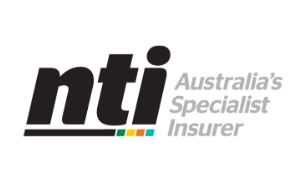Containerisation can turn a temperamental and inefficient app ecosystem into a coherent, modern, integrated, and cloud-enabled asset to drive future growth. However, to achieve this requires careful selection of the platform and planning of the migration.
Together, Integral and NTI selected Red Hat's OpenShift and the initiative has enabled new ways of working for NTI, more development and testing efficiencies and faster application development to support a business with diverse digital systems, programs and applications.

When you challenge your development teams to: do things better, innovate and transform proven processes and technology, and set your business up for the next 5 years, it is not something you take lightly. Leveraging NTI’s internal expertise and innovative culture combined with Integral’s specialist consulting team, the initiative resulted in the right choice: Red Hat OpenShift Platform.
Then
NTI first adopted containers in 2017, leveraging the power to assist with new machine learning modelling techniques. NTI built a fit for purpose, container management platform during that period but as the value and opportunities of containers became obvious NTI needed to implement an enterprise level management platform. The NTI project team identified several key areas to focus on during their evaluation of various containerisation platforms.
Now
Through its work with Integral, NTI could confirm that Red Hat OpenShift Platform was the ideal platform to containerise its application ecosystem and set it up for future growth. What’s more, through working with Integral the insurer enabled a consistent implementation approach leveraging best practices to enable the benefits outlined above.
As a business that embraces digital technology and has shown continual growth across four decades, National Transport Insurance’s operations rely heavily on a diversity of digital systems, programs and applications.
How?
After undertaking a proof-of-concept on a small group of applications, the project team found that Red Hat’s OpenShift platform was the best fit and value for money. Once the NTI team decided to adopt the Red Hat OpenShift platform, the project could then move on to acquisition and eventually integrating Red Hat’s OpenShift platform with existing systems.
Who?
NTI is an Australian success story. Growing from a small business named R&G Insurance Consultants, NTI has, over almost five decades, become Australia’s leading transport, equipment and logistics insurer.
NTI itself was formed in 1986 when local insurers AMP, Sun Alliance, General Accident and QBE came together as equal joint shareholders. National expansion followed and today NTI is Australia’s foremost specialist insurer.
The current NTI shareholders are IAG’s CGU and Suncorp’s Vero, two of Australia’s largest general insurers.
What is Containerisation?
Application containerisation is a virtualisation method taking place at the operating system level. Many of the specialist applications used by financial institutions require specific operating system environments in which to run and many other applications require different ones. Containerisation gets around this conflict to enable them all to operate within the same overarching Operating System. In other words, multiple isolated applications that are running on a single host are accessing the same OS kernel.
The benefits of containerisation include:
- Higher operational efficiency
- Simplicity of maintenance
- Increased security
- More comprehensive reporting